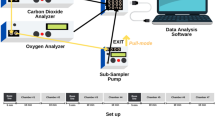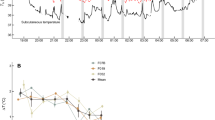Abstract
European barn owl chicks (Tyto alba) show a body mass overshoot prior to fledging that has been predicted to serve as an energy reservoir during periods of stochastic food availability. However, the composition of the mass overshoot has heretofore not been directly examined in nestlings of this or any other species displaying a body mass overshoot during growth (e.g., raptors and seabirds). To experimentally determine whether the overshoot in body mass in juvenile European barn owls (Tyto alba) may act as an energy reservoir, we compared the body composition of owl chicks raised on an ad libitum diet to those fed a restricted diet designed to eliminate the overshoot. Chicks raised on the two diets were also compared for differences in maturation of diverse functions (e.g., locomotion) and tissues (e.g., skeletal development). Contrary to expectations, our results on body composition in juvenile barn owls indicate that the mass overshoot prior to fledging is primarily comprised of an increased water compartment. Thus, we suggest that the mass overshoot in owls (and possibly in other species) does not serve as an energy reservoir but, rather, may function as an insurance against dehydration when hot in-nest conditions force chicks to rely on evaporative cooling: temperatures in barn owl nests can reach up to 43°C. We found no significant differences in maturation indexes between diet treatments at the time of fledging

Similar content being viewed by others
Explore related subjects
Discover the latest articles and news from researchers in related subjects, suggested using machine learning.Abbreviations
- AD LIB:
-
Ad libitum
- RESTR:
-
Restricted
References
Bintz GL, Mackin WW (1980) The effect of water availability on tissue catabolism during starvation in Richardson’s ground squirrels. Comp Biochem Physiol 65A:181–186
Bunn DS, Warburton AB, Wilson RDS (1982) In: Poyser T, Poyser AD (eds) The barn owl. Carlton, UK
Cherel Y, Charrassin J-B, Handrich Y (1993) Comparison of body reserves build up in prefasting chicks and adults of King penguins (Aptenodytes patagonicus). Physiol Zool 66:750–770
Cherel Y, Charrassin J-B, Challet E (1994) Energy and protein requirements for molt in the king penguin Aptenodytes patagonicus. Am J Physiol 266:1182–1188
Cherel Y, Robin J-P, Le Maho Y (1988) Physiology and biochemistry of long-term fasting in birds. Can J Zool 66:159–166
Close B, Banister K, Baumans V, Bernoth E-M, Bromage N, Bunyan J, Erhardt W, Flecknell P, Gregory N, Hackbarth H, Morton D, Warwick V (1997) Recommendations for euthanasia of experimental animals: part 2. Lab Anim 31:1–32
Dawson WR, O’Connor TP (1996) Energetic features of avian thermoregulatory responses In: Carey C (ed) Avian energetics and nutritional ecology. Chapman et Hall, London, pp 85–124
Dijkstra C (1988) Reproductive tactics in the Kestrel Falco tinnunculus a study in evolutionary biology. Ph.D. these University of Groningen, The Netherland
Drent RH, Daan S (1980) The prudent parent: energetic adjustments in avian breeding. Ardea 68:225–252
Durant JM (2002) The influence of hatching order on the thermoregulatory behaviour of barn owl Tyto alba nestlings. Avian Sci 2:167–173
Durant JM, Gendner J-P, Handrich Y (2004) Should I brood or should I hunt: a female barn owl’s dilemma. Can J Zool. doi:10.1139/Z04–078
Durant JM, Handrich Y (1998) Growth and food requirement flexibility in captive chicks of the European barn owl (Tyto alba). J Zool 245:137–145
Durant JM, Massemin S, Thouzeau C, Handrich Y (2000) Body reserves and nutritional needs during laying preparation in barn owls. J Comp Physiol. doi:10.1007/s003600050283
Folch J, Lees M, Sloane Stanley GH (1957) A simple method for the isolation and purification of total lipids from animal tissues. J Biol Chem 226:497–509
Hayward LS, Wingfield JC (2004) Maternal corticosterone is transferred to avian yolk and may alter offspring growth and adult phenotype. Gen Comp Endocrinol. doi:10.1016/j.ygcen.2003.11.002
Holt DW, Melvin SM, Steele B (1992) Nestling growth rates of short-eared owls. Wilson Bull 104:326–333
Hõrak P, Tegelmann L, Ots I, Møller AP (1999) Immune function and survival of great tit nestlings in relation to growth conditions. Oecologia. doi:10.1007/s004420050934
Janczak AM, Braastad BO, Bakken M (2006) Behavioral effects of embryonic exposure to corticosterone in chickens. Appl Anim Behav Sci. doi:10.1016/j.applanim.2005.04.020
Kitaysky AS, Kitaiskaia E, Piatt J, Wingfield JC (2003) Benefits and costs of increased levels of corticosterone in seabird chicks. Horm Behav. doi:10.1016/S0018-506X(02)00030-2
Kitaysky AS, Kitaiskaia EV, Wingfield JC, Piatt JF (2001) Dietary restriction causes chronic elevation of corticosterone and enhances stress response in red-legged kittiwake chicks. J Comp Physiol B. doi:10.1007/s003600100230
Kitaysky AS, Piatt JF, Wingfield JC, Romano M (1999) The adrenocortical stress-response of black-legged kittiwake chicks in relation to dietary restrictions. J Comp Physiol B. doi:10.1007/s003600050225
Korpimäki E (1981) On the ecology and biology of Tengmalm’s owl (Aegolius funereus) in Southern Ostrobothnia and Suomenselkä, western Finland. Ph.D. thesis, University of Oulu, Finland
Kristan DM, Gutiérrez RJ, Franklin B (1996) Adaptative of growth patterns in juvenile spotted owls. Can J Zool 74:1882–1886
Lacombe D, Bird DM, Hibbard KA (1994) Influence of reduced food availability on growth of captive American kestrels. Can J Zool 72:2084–2089
Landys MM, Piersma T, Guglielmo CG, Jukema J, Ramenofsky M, Wingfield JC (2005) Metabolic profile of long-distance migratory flight and stopover in a shorebird. Proc R Soc. doi:10.1098/rspb.2004.2952
Landys MM, Piersma T, Visser GH, Jukema J, Wijker A (2000) Water balance during real and simulated long-distance migratory flight in the bar-tailed godwit. Condor 102:645–652
Lesage L, Gauthier G (1998) Growth and organ development in greater snow goose goslings. Auk 114:229–241
Lindström Å, Piersma T (1993) Mass changes in migrating birds: the evidence for fat and protein storage re-examined. Ibis 135:70–78
Love OP, Bird DM, Shutt LJ (2003) Corticosterone levels during post-natal development in captive American kestrels (Falco spaverius). Gen Comp Endocrinol 130:135–141
Massemin S, Groscolas R, Handrich Y (1997) Body composition of the European barn owl during the nonbreeding period. Condor 99:789–797
Metcalfe NB, Monaghan P (2001) Compensation for a bad start: grow now, pay later? TREE. doi:10.1016/S0169-5347(01)02124-3
Mikkola H (1983) In: Poyser T, Poyser AD (eds) Owls of Europe. Carlton, London
Murphy ME (1996) Nutrition and metabolism. In: Carey C (ed) Avian energetics and nutritional ecology. Chapman & Hall, New York, pp 31–60
Naguib M, Nemitz A, Gil D (2006) Maternal developmental stress reduces reproductive success of female offspring in zebra finches. Proc R Soc B. doi:10.1098/rspb.2006.3526
Newton I (1979) In: Poyser T, Poyser AD (eds) Population ecology of raptors. Carlton, London
O’Connor RJ (1977) Growth strategies in nestling passerines. Living Bird 16:2009–2238
Phillips RA, Hamer KC (1999) Lipid reserves, fasting capability and the evolution of nestling obesity in procellariiform seabirds. Proc R Soc B. doi:10.1098/rspb.1999.0783
Pryce CR, Rüedi-Bettschen D, Dettling AC, Feldon J (2002) Early life stress: long-term physiological impact in rodents and primates. News Physiol Sci 17:150–155
Reynolds SJ, Waldron S (1999) Body water dynamics at the onset of egg-laying in the Zebra Finch Taeniopygia guttata. J Avian Biol 30:1–6
Ricklefs RE (1983) Avian postnatal development. In: Farner DS, King JR (eds) Avian biology VII. Academic, New York, pp 1–83
Ricklefs RE, Schew WA (1994) Foraging stochasticity and lipid accumulation by nestling petrels. Funct Ecol 8:159–170
Roulin A (1998) Cycle de reproduction et abondance du diptère parasite Carnus hemapterus dans les nichées de chouettes effraies Tyto alba. Alauda 66:265–272
Sapolsky RM, Romero ML, Munck AU (2000) How do glucocorticoids influence stress responses? Integrative permissive, suppressive, stimulatory, and preparation actions. Endocr Rev 21:55–89
Schmidt-Nielsen K (1990) Animal physiology: adaptation and environment. Cambridge University Press, London, New York
Starck JM, Ricklefs RE (1998) Avian growth and development: evolution within the Altricial-Precocial spectrum. Oxford University Press, New York, Oxford
Stoleson SH, Beissinger SR (1997) Hatching asynchrony, brood reduction, and food limitation in a neotropical Parrot. Ecol Monogr 67:131–154
Taylor I (1994) Barn owls: predator-prey relationships and conservation. Cambridge University Press, Cambridge
Thouzeau C, Massemin S, Handrich Y (1997) Bone marrow fat mobilization in relation to lipid and protein catabolism during prolonged fasting in barn owls. J Comp Physiol B. doi:10.1007/s003600050043
Thouzeau C, Robin J-P, Le Maho Y, Handrich Y (1999) Body reserve dynamics and energetics of barn owls during fasting in the cold. J Comp Physiol B. doi:10.1007/s003600050262
Van der Ziel CE, Visser GH (2000) The effect of food restriction on morphological and metabolic development in two lines of growing Japanese quail chicks. Physiol Biochem Zool 74(1):52–65
Warham J (1990) The petrels: their ecology and breeding systems. Academic, London
Whitman BA, Breuner CW, Dufty AM (2005) Investigator handling, stress and nestlings: should we be concerned? Int Comp Biol 45:1096
Acknowledgments
We thank E Mioskowski and A Wulgué for help with laboratory analyses. We also thank L Ciannelli for valuable comments on earlier drafts of the manuscript. This study was conducted in compliance with current French laws and after experiments were approved by French authorities: Authorisation of the Ministère de l’Agriculture et de la Pêche nb 04196.
Author information
Authors and Affiliations
Corresponding author
Additional information
Communicated by G. Heldmaier.
Electronic supplementary material
Rights and permissions
About this article
Cite this article
Durant, J.M., Landys, M.M. & Handrich, Y. Composition of the body mass overshoot in European barn owl nestlings (Tyto alba ): insurance against scarcity of energy or water?. J Comp Physiol B 178, 563–571 (2008). https://doi.org/10.1007/s00360-007-0246-4
Received:
Revised:
Accepted:
Published:
Issue Date:
DOI: https://doi.org/10.1007/s00360-007-0246-4




